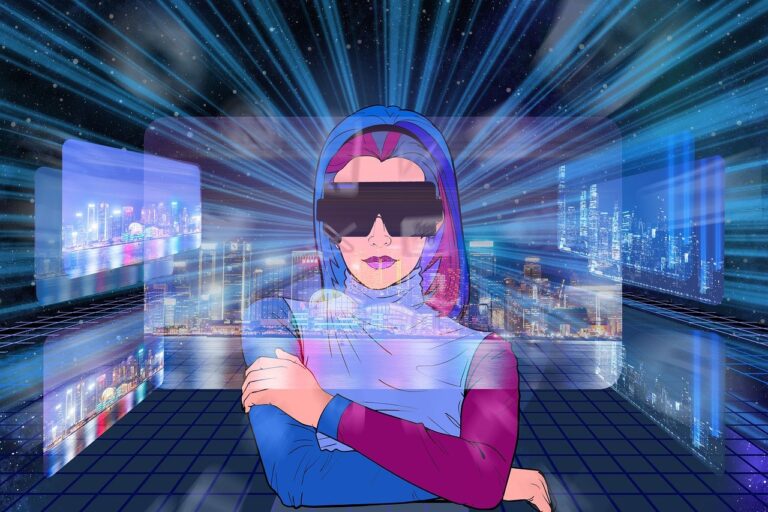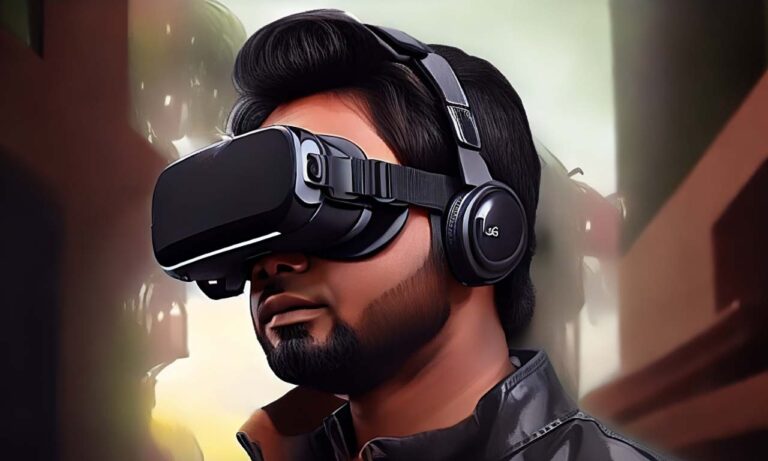
Virtual Reality is a simulated experience that could be very similar to or different from the real world. VR technology creates an artificial computer-generated world that immerses its users. VR headsets with high-resolution visuals and dynamic sounds deliver this sensory overload for an unforgettable experience. Interactions within the VR environment are typically done through specialized controllers or hand-tracking systems.
Virtual Reality creates a 3D computer-generated environment where users can explore and interact freely through hardware and software components.
1. Virtual Reality Headset: Users wear a headset equipped with one or two screens and various sensors, which track head movement to adjust the view on these screens accordingly and create a sense of immersion for users.
2. Tracking Systems: Headsets include tracking sensors or cameras which monitor head movement to adjust virtual display accordingly and ensure user perspective aligns with real-time movements. This data allows the virtual display to adapt accordingly and align seamlessly with real-time user movements.
3. Input Devices: Virtual reality experiences typically involve handheld controllers or gloves that enable users to interact with the virtual environment, capturing hand movements to manipulate objects, perform actions and increase interactivity. These input devices capture users’ hand movements for enhanced user interaction and improved immersiveness.
4. Computer Processing: VR relies on powerful computers or gaming consoles to generate and render virtual environments in real time. These devices process complex 3D graphics seamlessly for an optimal user experience.
5. Audio and Other Sensory Feedback: Sound is essential in creating an immersive VR experience. Spatial audio techniques provide realistic soundscapes, enhancing the sense of presence. Some VR systems also incorporate haptic feedback devices, such as gloves or vests, to simulate touch and improve immersion.

VR gaming offers unsurpassed levels of immersion and interactivity, enabling players to immerse themselves in virtual game worlds fully. It enhances realism while heightening enjoyment and engagement for a truly unforgettable experience.
VR is an ideal environment for education and training purposes, being used widely across industries from surgical training to military simulations to flight simulations – providing immersive, hands-on experiences and skill development with no risks involved.
VR has become an invaluable tool in physical and psychological therapies, assisting patients in confronting fears via virtual environments, relieving pain management concerns, and treating conditions such as PTSD or anxiety.
VR technology allows potential home and commercial space buyers to tour properties remotely via virtual tours, providing convenience while expanding exposure for each property to a global audience.
VR has moved beyond gaming to become an indispensable form of media and entertainment, revolutionizing experiences at movies, concerts, sports events, and other media-rich experiences. VR provides immersive environments with stunning 3D effects for film-watching and sporting events, creating captivating environments and providing unforgettable 3D experiences!

Cost: VR headsets and the associated computing power can be prohibitively expensive, creating a barrier to the widespread adoption of this technology.
Physical Discomfort: Extended VR use can result in discomfort, such as eye strain, nausea, and dizziness – often known as VR sickness. These discomforts may interfere with user experiences and reduce session length.
Technological Limitations: While VR technology has made impressive strides, there are still technical challenges to be overcome, such as achieving truly lifelike graphics and ensuring seamless, lag-free performance.
Isolation: Virtual reality experiences can be isolating, as users become entirely immersed in simulated environments. With direct human interactions in this virtual environment, experiences may retain much of their social aspect.
Space Requirements: For VR systems to operate safely, they often require a substantial amount of physical space. This may limit their usage in specific environments or present accessibility challenges for certain users.
As technology develops, we can expect further advances in virtual reality (VR), expanding its potential and overcoming any limitations it might present. VR will likely become an integral component of daily life.


